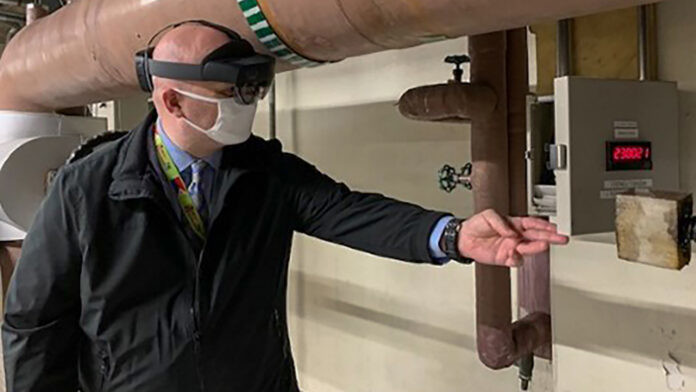“Generally speaking, we send people overseas to perform these inspections,” Jaume explains. “But by providing the technology locally, they can wear the headset and communicate with the inspectors via Microsoft Teams.”
Given the cost savings of thousands of dollars per trip, it’s likely that these head-mounted displays will remain a part of OBO’s toolkit, even when the world opens back up.
VIDEO: See how HoloLens helps the Army train a new generation of soldiers.
NASA Turns On Its Hyperwall to Explain Phenomena
In many ways, the technologies themselves are not new, says Shawn McCarthy, research director for government infrastructure and systems optimization strategies at IDC.
“360-degree rooms and mixed reality headsets have been around since the 1990s,” he says. “The difference today is the high-definition nature of the images, and the speed at which images are processed. Early versions had a lot of lag.”
NASA’s Hyperwall is a good example of a technology that, while not new, is vastly improved over earlier versions. The Hyperwall is a custom-built tiled display consisting of 15 screen panels at Goddard Space Flight Center in Maryland. The space agency uses the wall as a storytelling tool.
“It can be a challenge if you’re used to presenting a PowerPoint,” says Mark SubbaRao, the lead at NASA’s Scientific Visualization Studio (SVS). Standard presentations aren’t effective on the massive bank of screens, which stands almost 7 feet high and 20 feet across.
The SVS works with NASA scientists to find effective ways to use the Hyperwall and has built a library of content that works on both the main Hyperwall and on a slightly smaller version that the agency often takes to conferences.
While visually impressive, the Hyperwall doesn’t require specialized hardware on the back end. “We use all sorts of computers to run the Hyperwall, such as Mac Minis and other mini workstations,” says Eric Sokolowski, the Hyperwall manager. “There’s nothing special about the hardware aside from it being small and having decent accelerated graphics capabilities.”













